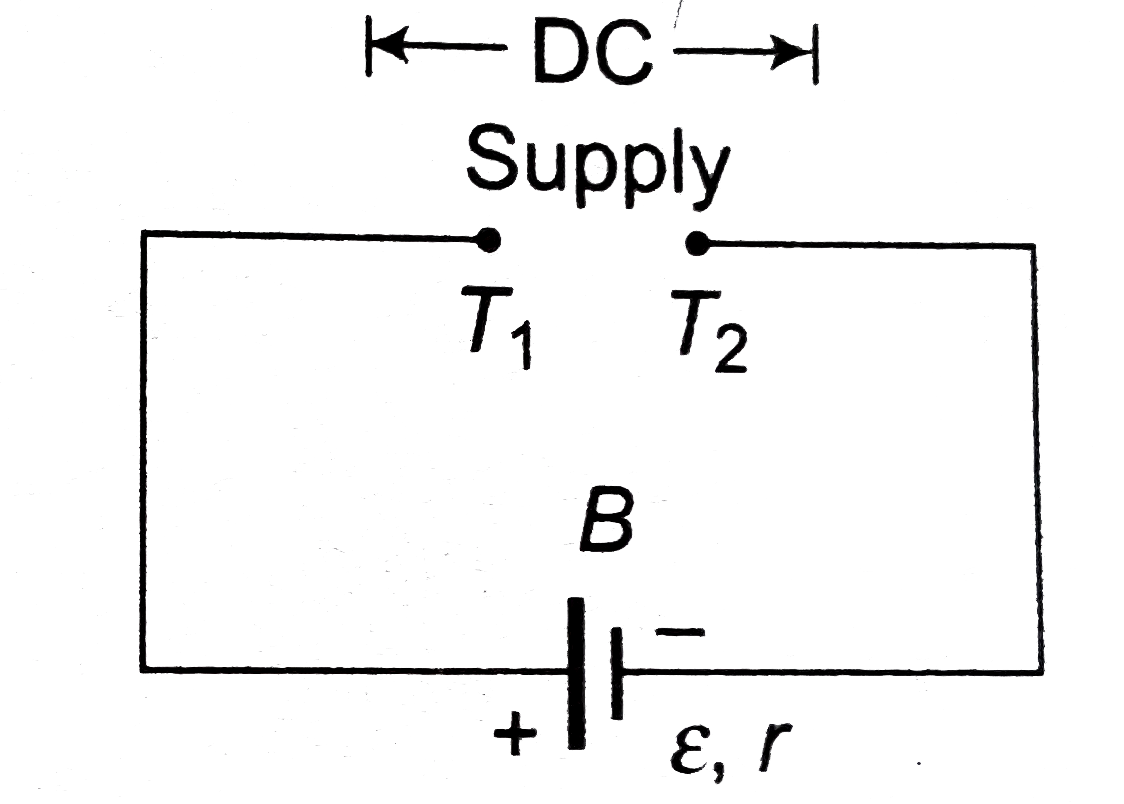A conducting wire of length and cross sectional area A is used to short the terminals of a cell having emf of and internal resistance . The resistively, density and Molar mass of the material of the wire are respectively. Calculate the average time needed for a free electron to travel from positive terminal of the cell to its negative terminal.
The correct Answer is:
Step by step video, text & image solution for A conducting wire of length l and cross sectional area A is used to short the terminals of a cell having emf of epsilon and internal resistance r. The resistively, density and Molar mass of the material of the wire are r, d and M respectively. Calculate the average time needed for a free electron to travel from positive terminal of the cell to its negative terminal. by Physics experts to help you in doubts & scoring excellent marks in Class 12 exams.
Topper's Solved these Questions
Similar Questions
A cell of emf ε and internal resistance (r) is connected in series with an external resistance (nr) then the ratio of the terminal potential difference to emf is:
View SolutionA group of six identical cells each of emf E and internal resistance r are joined in series to from a loop. The terminal voltage across each cell is
View Solution
Knowledge Check
- Question 1 - Select One
An electric wire of length ‘ I ’ and area of cross-section a has a resistance R ohm s. Another wire of the same material having same length and area of cross-section 4a has a resistance of
A4RBR/4CR/16D16R - Question 2 - Select One
An accumulator battery (storage cell) B of emf ε and internal resistance r is being charged from DC supply whose terminals are T1 and T2
 .APotential difference between T1 and T2 must be >εBT1 must be positive with respect to T2CIn the battery, current flows from the positive to the negative terminalDAll the above options are correct.
.APotential difference between T1 and T2 must be >εBT1 must be positive with respect to T2CIn the battery, current flows from the positive to the negative terminalDAll the above options are correct. - Question 3 - Select One
A student measures the terminal potential difference (V) of a cell (of emf ε and internal resistance r) as a function of the current (I) flowing through it. The slope and intercept of the graph between V and I, then respectively, equal
Aε and −rB−r and εCr and −εD−ε and r
A resistance R is connected across a cell of emf ε and internal resistance r. A potentiometer now measures the potential difference between the terminals of the cell is V. Write the expression for r in terms of ε, V and R.
View SolutionFor a cell, a graph is plotted between the potential difference V across the terminals of the cell and the current I drawn the cell. The emf and the internal resistance of the cell are E and r, respectively. Then
 View Solution
View SolutionTwo wires of same material have lengths, L and 2L and cross-sectional area 4A and A, respectively. The ratio of their resistances would be
View SolutionTwo wires of same material have length L and 2 L and cross– sectional areas 4 A and A respectively. The ratio of their specific resistance would be
View SolutionA cell of e.m.f (E) and internal resistance (r) is connected in series with an external resistance (nr.) then the ratio of the terminal p.d. to E.M.F is
View Solution

